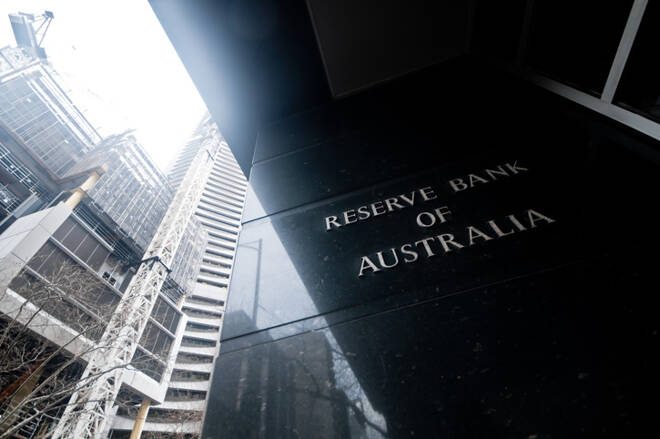Advertisement
Advertisement
Probability of Rate Cut from RBA Spikes to 80%.
By:
This week, the RBA minutes affirmed that the central bank is ready to cut interest rate again. According to the central bank the growing economic risk in or outside Australia, could force the RBA to turn from a neutral monetary policy stance back where it started this year, to a monetary easing.
Despite the efforts of the Australian government to boost the consumer sentiment by applying tax offsets and by pausing the interest rate cuts for 3 months, it seems that their plan for using tax offsets in order to quarantine relief at the lower end of the income rates was not as successful as they were hoping for. RBA governor Philip Lowe, however, continues to support that the federal government’s tax cuts are expected to boost household income and consumption growth sooner or later.
Hence, the RBA, by acknowledging that Australian consumer sentiment fell to a two-year low, and as the overall weakness in construction and housing investment insist, is obliged to held off cutting rate for September and to proceed to a rate cut of up to 25 bps in October (according to market consensus).
As JP Morgan stated, the bank’s forecast of improvement in domestic demand could be threatened by the not sufficient benefit from income tax rebates and the stalled wages growth. Despite the unexpectedly Australian employment growth released in July and August and overall in 2019, unemployment rate stalled at 5.2% from May to July while it jumped to 5.3% for August.
This spreads great uncertainty regarding the potential growth of labor market, especially due to the fact that the wages growth for Australians is the worst in comparison with the rest of the industrialized world. In the past 12 months Australian ordinary full time wages have increased by 2.6 %, around 1.5 percentage points below its average of the past decade.
Australian inflation meanwhile, Q2 CPI came in stronger than expected at 0.6% q/q, up from 0.0% q/q in Q1. However, the trimmed mean inflation rate came in at 1.6% y/y, down on the RBA’s February forecast for this metric to reach 1.8% by June, and well below its overall 2%-3% inflation target.
The minutes of the Reserve Bank of Australia’s (RBA) September 3 meeting released on Tuesday clearly showed it would consider further rate cuts if necessary to support growth and achieve its 2% to 3% inflation target. The RBA stated this month that a rate cut “would be appropriate” should inflation remain weak.
Hence, after the labor market report, RBA Rate Indicator today, is discounting about an 80% probability for a 25 bp cut in the cash rate at the next RBA policy meeting. The percentage probability of an RBA interest rate doubled from yesterday, due to the disappointment on the August employment market report yesterday. The fact that unemployment has continued its steady grind higher, hitting 5.3 % in August, comes in contrast with RBA’s hopes for 4.5% outcome that could drive wages growth up.
Callam Pickering, economist for global job site said: “A higher unemployment rate suggests that stronger wage growth is unlikely for the foreseeable future […]”. Hence, as wages remain under pressure, as the number of people looking for work edges up, as low consumer spending is having a direct impact on business spending, and as debt levels remain high, RBA’s outlook and Aussie’s outlook as well, are expected to remain in a downwards trajectory.
The only bright spot is the slight pullback that we have seen in the housing market, with both mortgage approvals and auction clearance rates climbing. As stated in a Reuters report: “House prices could rise further as data on residential building approvals and information from the RBA’s liaison program suggested near-term weakness in new high-density dwelling investment.”
Other than the combo of disappointing Australian data, the threat of recession on major economies worldwide, along with the slowdown in the Chinese economy due to US-Sino trade war, having a direct impact to the biggest exporter of China, i.e. Australia, and along with RBA’s potential easing, are likely to keep Aussie under a selling pressure.
Andria Pichidi, Market Analyst at HotForex
(Read Our HotForex Review)
Disclaimer: This material is provided as a general marketing communication for information purposes only and does not constitute an independent investment research. Nothing in this communication contains, or should be considered as containing, an investment advice or an investment recommendation or a solicitation for the purpose of buying or selling of any financial instrument. All information provided is gathered from reputable sources and any information containing an indication of past performance is not a guarantee or reliable indicator of future performance. Users acknowledge that any investment in Leveraged Products is characterized by a certain degree of uncertainty and that any investment of this nature involves a high level of risk for which the users are solely responsible and liable. We assume no liability for any loss arising from any investment made based on the information provided in this communication. This communication must not be reproduced or further distributed without our prior written permission.
About the Author
Andria Pichidicontributor
Andria is a a Market Analyst with a mission to actively support HotForex’s clients in becoming better traders, by delivering daily market reviews.
Did you find this article useful?
Latest news and analysis
Advertisement
